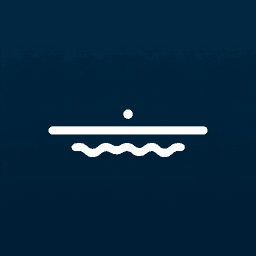
Length Water Line: Definition and Examples
February 27, 2025
Length Water Line (LWL)
The Length Water Line (LWL) is a crucial measurement in the maritime and sailing world, referring to the length of a vessel at the waterline. This measurement is taken from the point where the hull meets the water at the bow to the point where the hull meets the water at the stern. It is a key factor in determining a boat's speed, stability, and overall performance.
Importance in Sailing:
- Speed: The LWL is directly related to a vessel's potential speed. A longer waterline generally allows for higher speeds, as it affects the hull speed, which is the theoretical maximum speed a displacement hull can travel without planing.
- Stability: A longer LWL can contribute to greater stability, especially in rough waters, as it provides more surface area in contact with the water.
- Performance: The LWL is a critical factor in yacht design and racing. It influences the boat's handling characteristics and efficiency in various sea conditions.
Calculation and Measurement:
The LWL is typically measured when the boat is at rest in calm water, ensuring accuracy. It is an essential specification in boat design and is often used in conjunction with other measurements like beam and draft to assess a vessel's capabilities.
Relevance to Maritime Users:
For sailors and maritime professionals, understanding the LWL is vital for making informed decisions about vessel selection, navigation, and performance optimization. It is a standard metric used in the classification and comparison of boats, particularly in competitive sailing.
Understanding Length Water Line in Maritime Context
The length water line (LWL) is a crucial measurement in maritime terminology, referring to the length of a vessel at the waterline. This is the horizontal distance between the forward-most and after-most points on a vessel's waterline. The LWL is typically shorter than the overall length of the vessel due to the protrusions at the bow and stern.
Importance of Length Water Line
The length water line is significant for several reasons:
- Hull Speed: The LWL is directly related to a ship's hull speed, which is the maximum speed a displacement hull can achieve. A longer waterline generally allows for higher speeds.
- Stability and Load Capacity: The LWL affects the vessel's stability and load capacity. It is used in calculating the ship's draft, which is the vertical distance between the waterline and the bottom of the hull (keel). This measurement ensures that a vessel can safely navigate through various water depths without running aground.
- Design and Performance: The LWL is a critical factor in the design phase of a vessel, influencing its performance and efficiency. It helps in determining the optimal hull shape for speed and fuel efficiency.
Frequently Asked Questions
What is the definition of a waterline on a boat?
The waterline is the intersection of a boat's hull and the water's surface, or where the boat sits in the water. It is a key factor in determining a ship's draft.
How do you measure waterline length?
The waterline length is measured from the tip of the stern to the end of the bow on the hull. For multihulls, this measurement is crucial for understanding the vessel's performance capabilities.
What is the load line length of a ship?
The load line length is measured on a specific waterline, often at 85 percent of the least molded depth. It is either 96 percent of the total waterline length or the waterline length from the forward side of the stem to the axis of the rudder stock, whichever is longer.
Understanding these measurements is essential for maritime professionals to ensure the safety, efficiency, and performance of vessels in various maritime operations.




